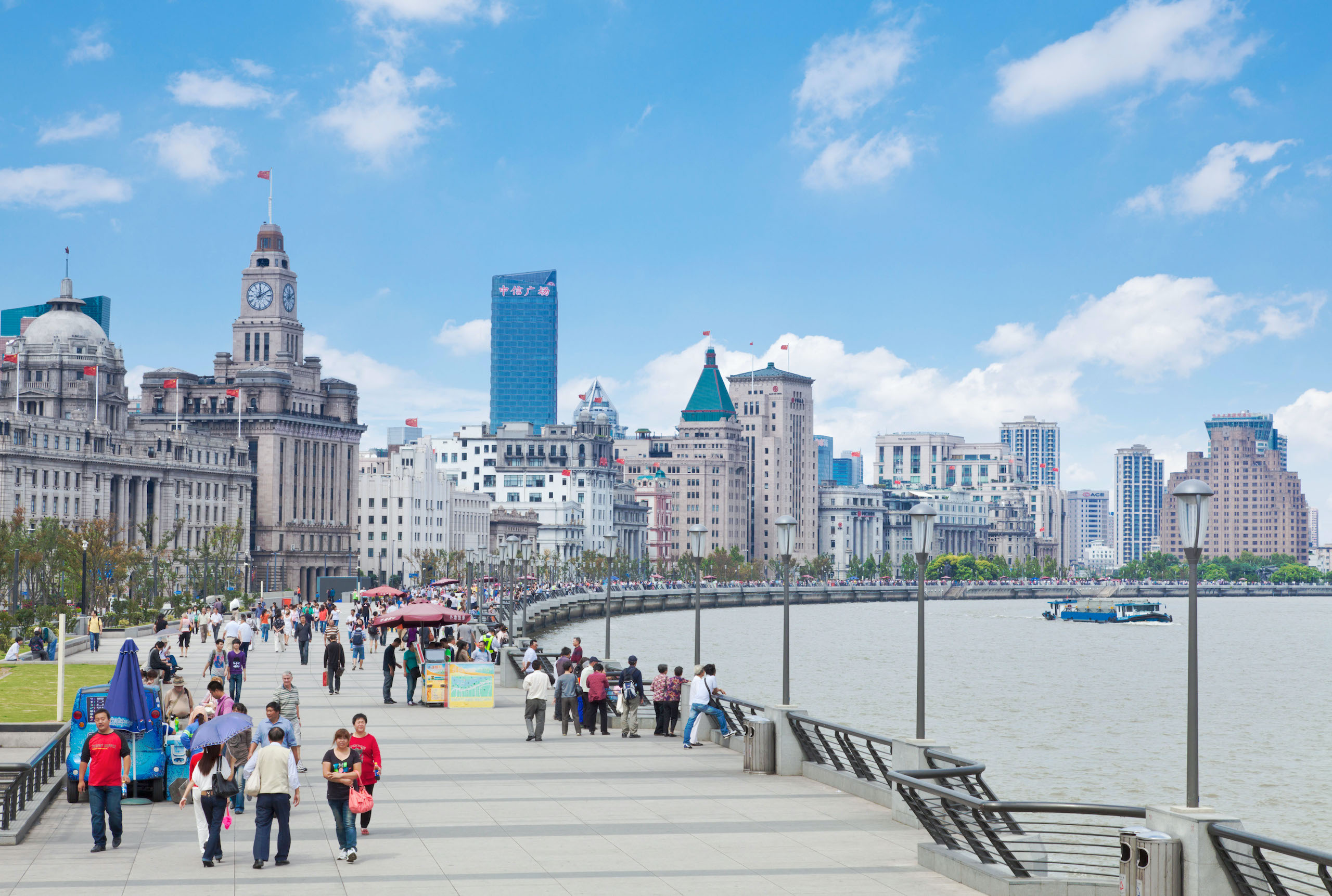A new study has identified a causal link between cleaner air in China and reductions in suicide. The researchers discovered fewer suicides on days with less air pollution. Other studies have found that the impacts of extreme temperatures can compound those of air pollution to increase the risk of depression and suicide. Together, these findings demonstrate the importance of cooperation between sectors and governments to improve air quality and alleviate extreme temperatures, experts tell Dialogue Earth.
Tamma Carleton is a co-author of the new study and an assistant professor at the University of California, Santa Barbara’s Bren School of Environmental Science & Management. She tells Dialogue Earth that though discussions around mental health and suicide had increased after Covid quarantines, “high temperatures and air pollution also play a pivotal role.”
The study assessed links between county-level suicide data from 2013 to 2017 and air pollution observations from 1,400 air quality monitors.
The researchers found that various factors, including rising incomes, higher educational levels and safer use of pesticides, have driven a decline in suicides in China. After excluding these and other confounding factors, the drop in fine particulate matter (PM2.5) pollution over the course of five years of air pollution restrictions, from 2013 to 2017, prevented between 13,000 and 79,000 suicides. This accounted for 10% of the decline in suicides during that period, the study found.
The study was a collaboration between Carleton and researchers from the Shanghai University of Finance and Economics, the Chinese University of Hong Kong, and the Chinese Center for Disease Control and Prevention.
The mental health impact of air pollution
China’s overall air quality has improved significantly since 2013, when the government declared war on pollution through its “Air pollution prevention and control action plan”. Nationwide, annual average concentrations of PM2.5 fell by 40% between 2013 and 2017, down from 72 to 43 micrograms per cubic metre (µg/m3), according to reports from the Ministry of Ecology and Environment.
Air pollutants and their impact on human health have been much discussed in China in recent years. The Air Quality Life Index (AQLI), produced annually by the University of Chicago’s Energy Policy Institute, translates levels of airborne fine particulate matter into a measure that shows their effect on life expectancy. In China, the 12% drop in PM2.5 levels between 2013 and 2016 equated to a six-month increase in average life expectancy.
However, air pollution also affects mental health, and a growing body of evidence suggests that prolonged exposure to air pollutants may lead to a number of neurocognitive problems. Though the exact mechanisms are not fully understood, researchers have proposed that PM2.5 increases the risk of suicide by inducing disorders such as depression and dementia.
In 2019, University College London published a meta-analysis of studies from around the world. It found that a 10 µg/m3 increase in the PM2.5 levels people were exposed to for long periods resulted in a 10% rise in their risk of developing depression. Meanwhile, the risk for suicide went up by 2% for every 10 µg/m3 increase in coarse particulate (PM10) pollution over a three-day period.
A 2020 study in the US found that for every 2.83 µg/m3 rise in PM2.5, older women had a 24% increase of developing Alzheimer’s over a five-year period. Being afflicted with Alzheimer’s or other forms of dementia is a key risk factor for suicide among the aged.
These findings were supported in Carleton’s study, where older Chinese women were found to be most vulnerable to the effects of air pollution. Estimates indicated that the sensitivity of the suicide rate to PM2.5 pollution, among women aged 65-85, was five times higher than among the full sample.
However, confounding factors such as economic growth and urbanisation make it difficult to quantify the connection between PM2.5 and suicide. In fact, China’s reduction in suicide risk between 2013 and 2017 was strongly associated with them. “It’s very hard to separate out economic activity from the impact of air pollution,” says Carleton.
The study used temperature inversions to resolve that problem, she explains. Air temperature normally decreases with altitude, but in the case of an “inversion event”, it increases, making it difficult for gaseous pollutants and dust to disperse into the sky, Carleton notes. Pollution exposure is therefore higher on a day in which this metereological phenomenon occurs, even when levels of economic activity are the same. Analysing temperature-inversion data allows researchers to exclude economic and related activity as factors contributing to air pollution.
With economic growth and urbanisation factored out, the areas where suicide numbers fell the most due to air quality improvements were in central and eastern China. These are heavily populated regions where PM2.5 levels have dropped significantly. PM2.5 improvements in Shanghai’s Pudong district reduced suicides by an estimated 155 (±56) in the five years, according to the model used in Carleton’s study.
Of all the Chinese counties with available data, only 5% experienced a deterioration in air quality during that period. These counties, which had a simultaneous increase in suicides, were mainly in the central and western-central regions of the country, where rising PM2.5 levels were attributable to dust and sand from desertification and sandstorms rather than direct anthropogenic emissions. “It’s a reflection of the urgency of combating air pollution, both in western areas of China and in other countries with serious pollution,” says Carleton.
High temperatures exacerbate air pollution
Air pollution is not the only climate-related factor that affects mental health. The UN’s climate science body, the Intergovernmental Panel on Climate Change (IPCC), indicates that there is a clear association between heatwaves and declining mental health.
A Fudan University study, which analysed more than 430,000 suicide deaths in China between 2013 and 2019, found that 15.2% were attributable to extreme temperatures. It also concluded that the risk of heat-related suicide was higher among older people and those with lower educational levels.
The study’s author, Professor Renjie Chen of Fudan University, told Dialogue Earth: “High temperatures impact particularly heavily on vulnerable groups with poor physical health and low socio-economic status. There are population variances that the government will need to consider when developing mental health programmes.”
The studies from both Carleton’s team and Fudan University excluded confounding factors and separately quantified the effect of air quality and high temperatures on suicide rates. A 2021 paper from Yale University suggested that while the mechanisms of interaction are not yet fully understood, both air pollution and high temperatures do associate to a high degree with suicide.
Chen explains that high temperatures and air pollution may independently or jointly affect brain function by disrupting the balance of neurotransmitters. Moreover, the rate at which air pollutants such as ozone are generated increases at higher temperatures, further worsening air quality, Chen tells Dialogue Earth. People may open the windows at such times to cool down, but as well as being an ineffective response to the heat of high summer, this may increase the concentration of pollutants indoors, exacerbating respiratory issues and indirectly increasing the suicide risk.
The combined effect of high temperatures and air pollution may also be magnified by psychosocial mechanisms. For example, persistently high temperatures may intensify stress, while poor air quality may restrict people’s outdoor activities and reduce social interaction.
The effects of high temperatures and air pollution on suicide rates are mutually reinforcing, says Chen. Health policy should take their combined effect into account, and introduce the necessary measures for mitigation and adaptation. More urban greenery, wider and more efficient use of air conditioning, and better systems for monitoring and issuing alerts about air quality would all help alleviate the mental health impacts of these environmental factors.
Focus needed on mental health impacts of climate change
Looking beyond air pollution, the climate crisis is also a mental health crisis.
Extreme weather events driven by climate change are increasingly prevalent around the world, including heatwaves, storms, floods and droughts. Survivors may be traumatised, having witnessed others being injured or killed. A rapid needs assessment of residents returning to New Orleans after Hurricane Katrina in 2005, carried out by the US Centers for Disease Control and Prevention, found that nearly 50% of respondents exhibited “a potential need” for mental health services.
Low-income households and the poor tend to be more vulnerable to climate impacts, and the economic shock of a poor harvest or family illness can harm mental health. In India, drought brought on by climate change has become a major factor driving farmers to take their own lives in recent years, according to a study published in 2023 by the International Institute for Environment and Development (IIED). High rates of farmer suicide have also been reported in five Indian states where rainfall has been below the national average over the past decade, the study found.
In 2022, a policy brief from the World Health Organization (WHO) emphasised the threat that climate change poses to mental health and wellbeing, and advised countries to integrate mental-health support services into their climate-crisis response. A year earlier, a WHO survey of 95 countries found that only nine had included mental health and psychosocial support within their national-health planning for climate change.
Economic development and urbanisation have contributed significantly to the decline in China’s suicide rate over the past 20 years. However, Michael R. Phillips, director of crisis intervention research at the Shanghai Mental Health Center, points out that these factors are not sufficient drivers on their own. China will need to come up with new approaches if it is to meet the UN sustainable development goal of cutting its suicide rate, by the year 2030, to one-third of the 2015 rate, he said.
Carleton says that mental-health practitioners can proactively support patients and those at risk of suicide, and prevent tragic outcomes, if they have the right environmental information and are alert to the dangers when temperatures spike or a major pollution incident occurs.
Chen recommends intergovernmental and cross-sectoral cooperation to tackle climate change: “Collaboration among meteorological and healthcare agencies is key, including data-sharing, joint research and the development of integrated strategies.”










